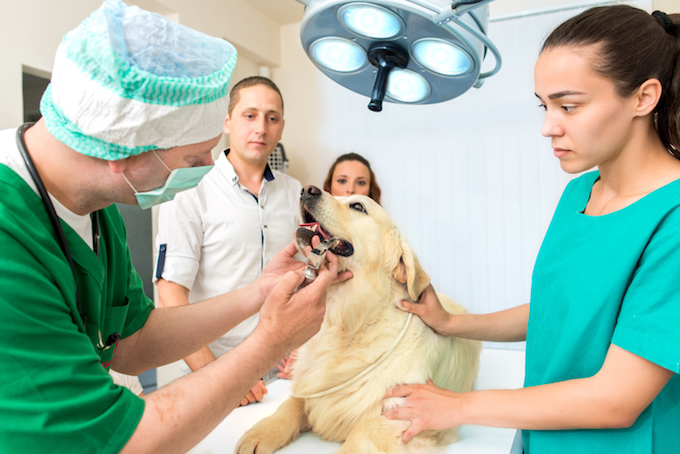Gingival fibrosarcoma in dogs is a specific form of mouth cancer. Specifically, the condition usually starts in the gums.
Generally, all dogs can be affected by the condition. Although dogs aged seven-and-a-half and older seem to develop it the most. Additionally, male dogs suffer from the condition more than female dogs.
Technically, fibrosarcoma in dogs can also happen to other parts of the body. You can read more about the condition in general here.
If you see the signs of gingival fibrosarcoma in your dog, then get to a veterinarian for a proper diagnosis and treatment.
Here’s what you should know about the symptoms, causes, and treatments for the condition.
Symptoms of Gingival Fibrosarcoma in Dogs
The condition produces a number of symptoms. For instance, some of the most common symptoms include:
- Drooling
- Bad breath
- Difficulties eating
- Losing weight
- Growth in mouth
- Blood from the mouth
- Teeth becoming loose
- Swollen lymph nodes
Causes of Gingival Fibrosarcoma in Dogs

The cause of the condition is unfortunately unknown. However, the following factors are suspected to contribute to it:
- Old age
- Radiation
- Infections
- Chemical exposure
Additionally, male dogs suffer from the condition more than female dogs. Also, the Golden Retriever breed seems to unfortunately suffer from the condition more than other breeds.
Treatments for Gingival Fibrosarcoma in Dogs
Firstly, your vet will ask about your dog’s symptoms. Secondly, your vet will ask about any circumstances or incidents that happened just before your dog started to show symptoms.
Thirdly, your vet will carry out a full physical examination. Specifically, your vet will pay close attention to your dog’s mouth and look for any growths. Ultimately, a biopsy of the affected area can confirm the condition.
Generally, treatment depends on the severity of the condition. For example, a process called cryosurgery can be used to freeze and remove any small tumors. However, larger tumors can require more intensive surgery.
Additionally, in some cases radiation therapy will be recommended.
Usually, dogs recovering from the condition will need to change their diet. Specifically, your dog will need to be fed soft or wet food. Your vet will help to formulate a safe and nutrious feeding plan for your dog.
Additionally, your dog will usually be prescribed pain medication as part of the recovery process. As always, if your vet prescribes your dog any medicine, make sure to stick to the correct dose and frequency instructions. Also, complete the full course of medicine.
Have you ever cared for a dog who suffered from this condition? How did your vet help your dog recover? Let us know in the comments section below.





